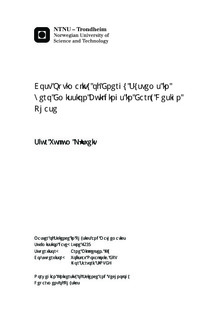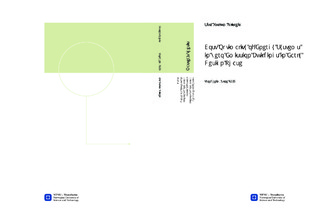| dc.description.abstract | The building sector accounts for a significant proportion of industrial countries total energy use, thus a cut in this sector has been regarded necessary to reach future climate goals. An important measure in this context is the introduction of zero emission buildings, buildings which can be defined as having a net zero annual energy demand. This master thesis is centered around finding cost optimal energy supply systems for zero emission buildings at an early stage of the building process. This thesis is closely linked to the Ådland project, currently the largest pilot project for the Research Center on Zero Emission Buildings. The testing was performed on a four floor building block located in Bergen. The ZEB-definition used was net zero primary energy consumption, where primary energy factors were used as weighting factors for the various energy carriers. Two types of primary energy factors were tested; total primary energy factors and non-renewable primary energy factors. Five different energy supply packages were investigated: Bio+PV, CHP+PV, DH+PV, HP+ST+PV and CHP+ST+PV. The base heating systems were dimensioned to cover the heating demand (space heating and domestic hot water), while PV was dimensioned so that the building reached the ZEB balance. Excess electricity was exported to the grid and sold to the local power company. The simulation tool IDA-ICE was used both for modeling the building and performing the energy simulations. The cost calculations followed the European Cost Optimal Methodology, calculating the net present value of all costs attributed to the implementation of the different packages (investments, annual costs and residual values) over a calculation period of 30 years. Both a pure financial and a macroeconomic calculation were performed for all packages. Sensitivity analyses were performed on the energy price escalation as well as investment costs.When total primary energy factors were used, the package HP+ST+PV proved to be the optimal package in all the different scenarios considered. The macroeconomic and the financial results were almost identical, mainly because of the low CO2-prices. The sensitivity analyses showed that the result is very stable with respect to uncertainties in both investment costs and future energy costs. For non-renewable primary energy factors the results showed that the package HP+ST+PV is best for both normal and high future energy price development, while the package Bio+PV was the best alternative for low energy price developments. The sensitivity analysis on investment cost showed the result for low energy price development was very sensitive for changes in investment costs, while for medium and high energy price development the result were more stable. Overall, for the energy supply packages considered and the primary energy factors used in this thesis, the conclusion is that HP+ST+PV is the cost optimal energy supply solution for the evaluated building. | nb_NO |

